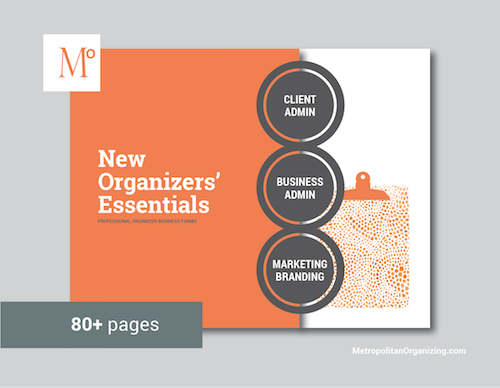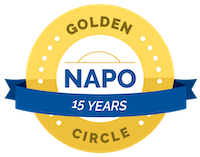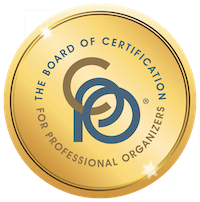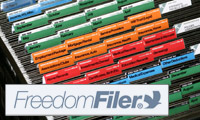Master the art of using business forms
I asked my friend, Geralin Thomas of Metropolitan Organizing in Cary, North Carolina, to write a guest post about how organizers can use forms in their businesses. Geralin has created a set of customizable forms that organizers can purchase, which I think are a great foundation for jumping right into business. (See the link below.) Last month, she spoke about using business forms at the 2018 NAPO Texas Regional Conference for Professional Organizers, so I was really happy when she agreed to share some of her expertise here!

Geralin Thomas
One of my business goals is to help professional organizers and productivity consultants reach their business goals by helping them build sustainable and lucrative organizing businesses. And of all the advice I offer and the skills I teach, there is probably none that helps new business owners more than learning to use forms to run their businesses.
What do I mean by “forms?” A form is a document containing specific fields of variable data. As an example, think of an old-fashioned check. A check is a document with fields where you can enter the date, the amount you want to pay, to whom you want to pay it, and so on. That’s a form: fixed fields with variable data in them.
I use forms with my clients to help them easily achieve their goals. For example, when I work with a client to streamline their wardrobe and create multiple outfits, I provide them with forms to keep track of which pieces work together well. And I designed some complimentary forms for use in your own wardrobe planning, available here.
As a business owner, you can use forms to streamline many daily functions inside your business. One key form is the one used for client intake. When a client calls, you want to give them plenty of space to talk about their needs and why they’ve called you today and what their goals are for working with you. But you also must remember to ask how they prefer to be contacted (work phone or mobile phone?), how they found you (internet search, referral from a past client, advertising, or television appearance?), and whether they have pets in the house, among many other questions.
Business owners want to give their clients and their employees or subcontractors the best possible experience. Using forms saves you from accidentally sending someone with a severe cat allergy out to a house with three cats, a waste of everyone’s time and effort.
Another key form is the client agreement. A clear and concise client agreement helps to ensure that everyone shares the same understanding of what you’ll be doing, what the client will be paying for, and how the relationship will unfold. This can prevent a host of misunderstandings and problems.

Using forms allows you to “master the art of faster” by handing off jobs more quickly. Your partners, employees, or subcontractors can step in rapidly with no fumbled hand-off. If you agreed to supply storage boxes, everyone knows what size and how many. Multiple people can work on the same job, so the client’s home clean-out project or move happens smoothly, no matter whether you are at the site or not.
Forms create a more consistent experience for your clients, so the service they get from one team is every bit as good as the service from another team.
Using forms will also help you to evaluate what is working for marketing your business and what could be better. If you collect the same information for every contact, you can make an apples-to-apples comparison. This lets you focus on the marketing efforts that gain you the most clients (and the clients you really love to work with!) rather than groping in the dark, trying a lot of random efforts to reach your perfect clients.
If you want to “master the art of faster” and save time and money by using forms, look at the package I offer to new organizers, here. You can customize the forms I offer – which cover client admin, business admin, and marketing and branding – to your brand and your business, so you don’t have to start from scratch.
To make life better for you, your team members, and your clients, master the art of faster by using forms in your business.
Geralin Thomas is a professional organizer and the owner of Metropolitan Organizing based in Cary, North Carolina. Geralin has appeared in an array of national magazines and she’s been featured on A&E’s Hoarders, The Nate Berkus Show, NBC’s The Today Show, CNN, and other outlets. She regularly coaches new organizers privately and teaches classes through the National Association of Productivity and Organizing Professionals.
Tagged with: becoming a po, becoming a professional organizer, forms, geralin thomas, guest post
Comments
Links
- Ravelry
- NAPO St. Louis
- Are you interested in becoming a professional organizer?
- Organize Your Family History
- National Association of Productivity and Organizing Professionals
- Institute for Challenging Disorganization
- Shannon Wilkinson, life coach
- Getting to Good Enough podcast
- Peace of Mind Budgeting








If you can have the forms feed into a CRM or even a spreadsheet would be an advantage if you want to generate a client list for emailing a newsletter. Google forms is also a cool way to get into online forms which can even be emailed.
Arthur Koulianos April 11, 2018 03:51 AM